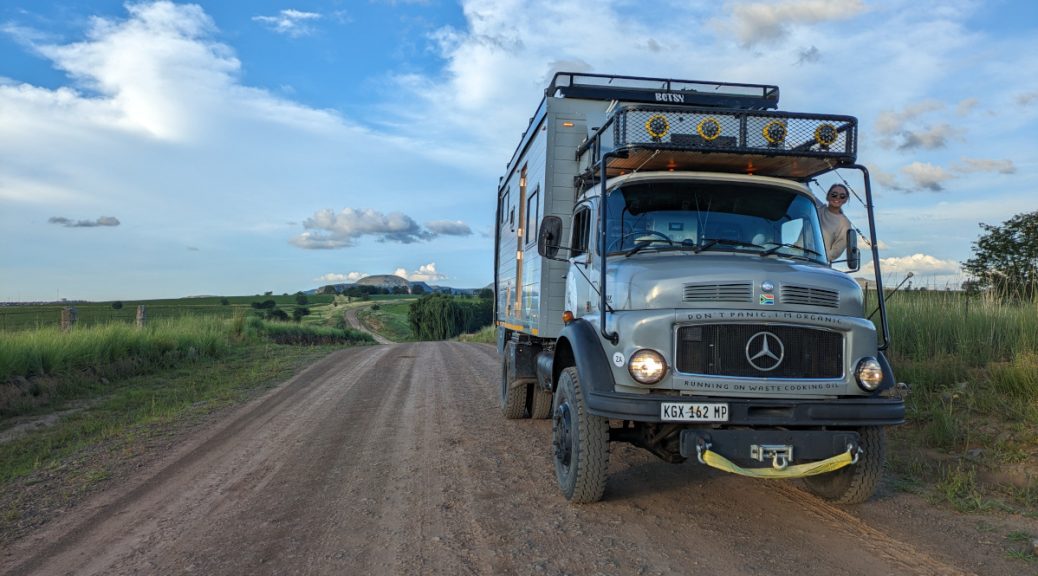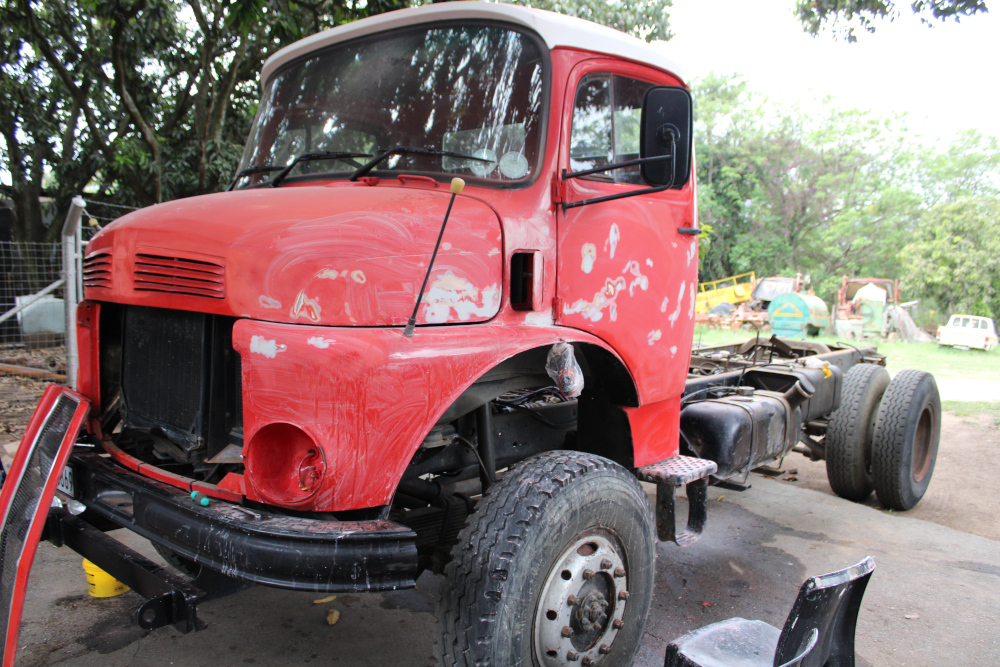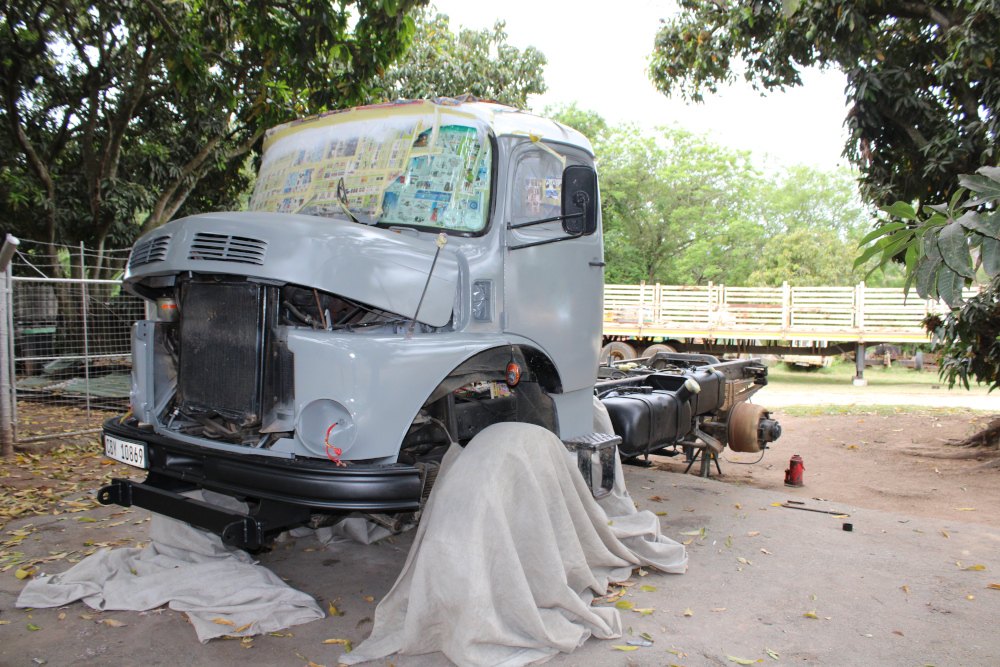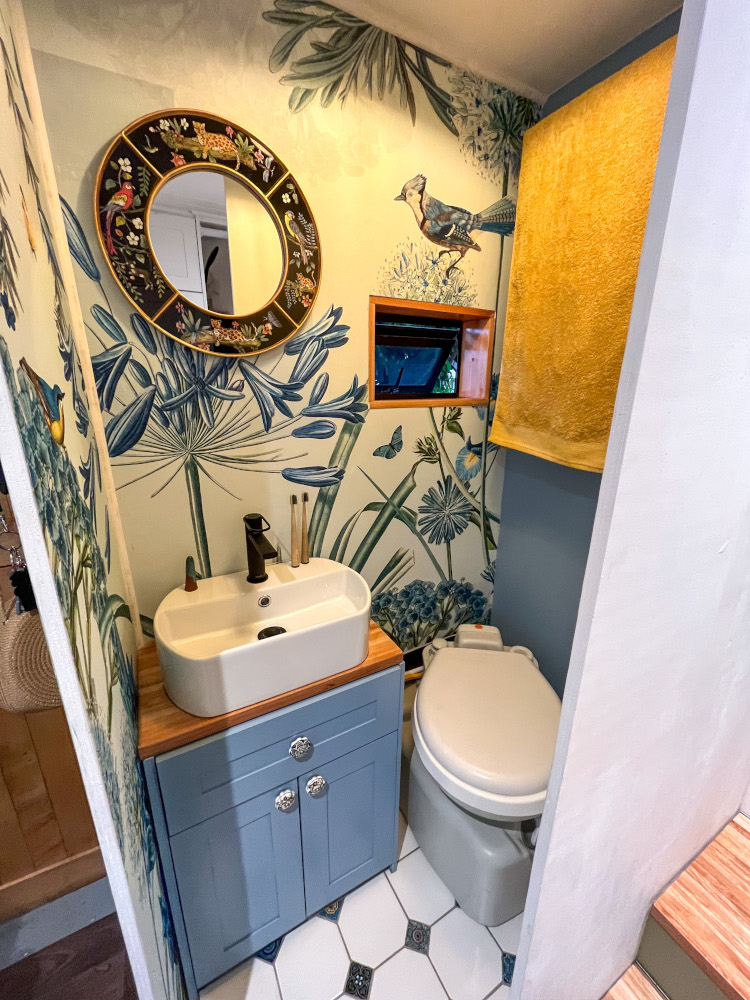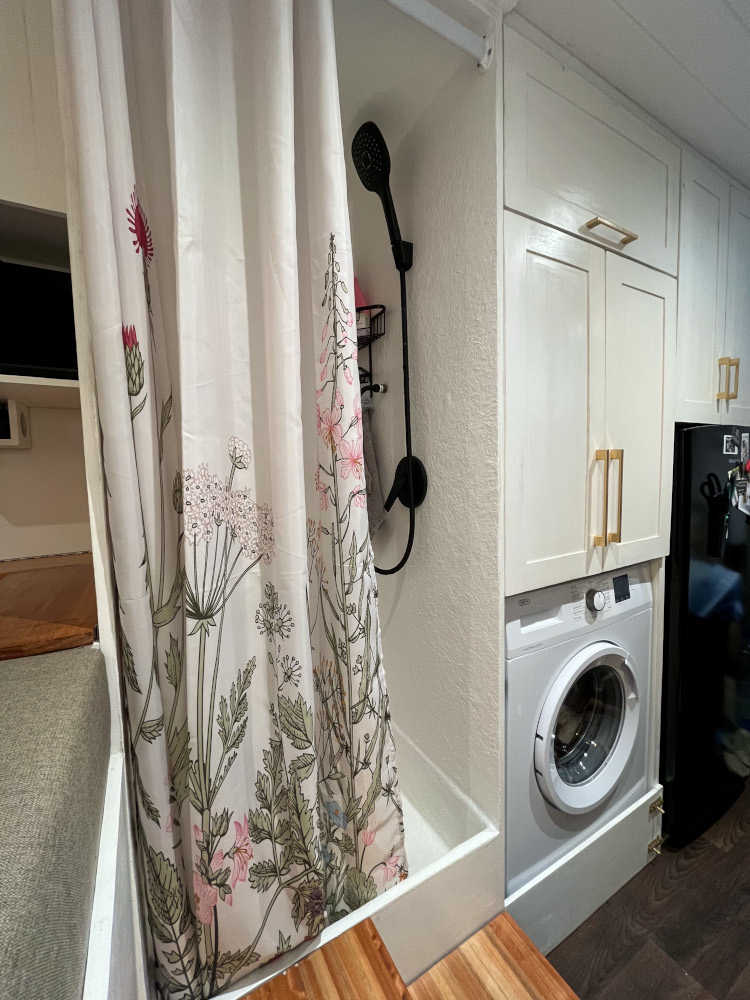The inspiring couple behind Matches on the Map, a stem cell recruitment drive, are planning to overland for 10 years. With their converted truck, they can reach out-of-the-way places to raise awareness of stem cell disorders and sign up donors.
If you come across Robin and Jolandie Lewis on your overlanding travels, you will know. Their Mercedes-Benz truck, Betsy, is hard to miss. Apart from her size – Betsy used to be a fire rescue truck – she boasts a custom-made living space. Robin and Jolandie are talented artisans as you’ll gather from the beautiful cabinetry and soft furnishings inside Betsy. You might even spot the couple on their hand-built sundowner deck. What you won’t overlook is the many stickers that adorn Betsy. A big one proclaims the expedition name: Matches on the Map. It’s a 10-year overlanding trip to recruit stem cell donors who might prove to be a life-saving match.
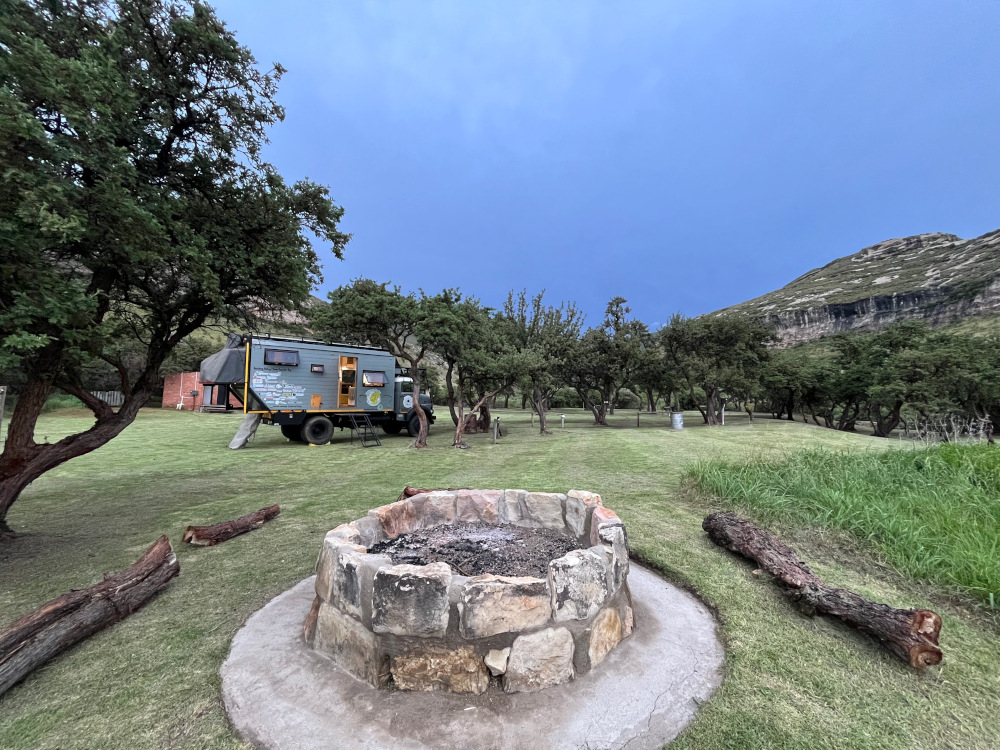
When Robin was diagnosed with a rare, incurable disease called Fanconi anaemia in 2018, a stem cell transplant saved his life. But he discovered that not everyone is fortunate enough to find a matching donor. To broaden the pool of potential donors, Robin and Jolandie are now overlanding with a mission. Wherever their travels take them, they educate people about stem cell transplants. For example, did you know that donating stem cells is no more complicated or painful than donating blood? It’s even simpler to sign up as a potential donor – all it takes is a simple cheek swab.
Tracks4Africa talked to Robin to find out more about the expedition, Betsy’s conversion and the roads they are travelling.
Where and when did your trip get under way?
It was important to us to get going on 16 September (2023) as it was World Marrow Donor Day. We started in our home town, Nelspruit, and then drove via Barberton to the Bulembu Border Post to cross into eSwatini. The route was both scenic and strategic. Bulembu Pass is quite steep, so we thought it would be a good test run for Betsy. We actually had the first wild camp of the trip right on the pass. Luckily, Betsy went up easily and the next morning we were the first people at the border. Bulembu is a very simple and friendly border to pass through.
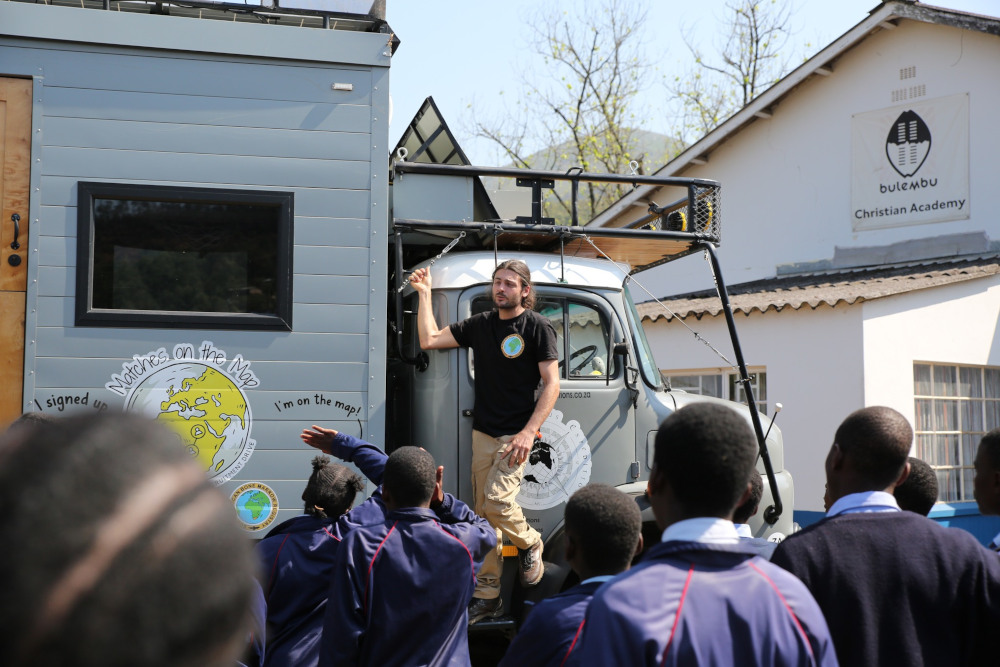
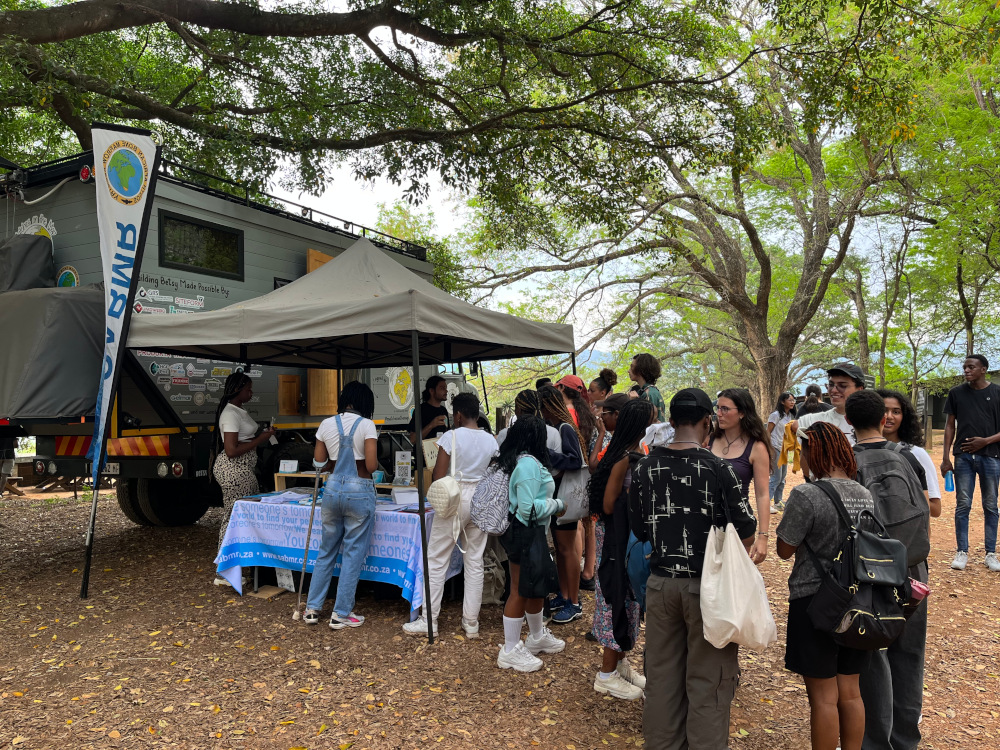
We had the first educational talk of the trip shortly after crossing into eSwatini and at Ngwenya Glass, we signed up stem cell donors. At our recruitment drives, we explain that it’s safe and painless to become a donor and that there is no cost to signing up. Anyone between the ages of 16 and 45 can do so.
Where has the trip taken you so far?
From eSwatini we decided to head to Kosi Bay. The weather caught us on the way, but our Tracks4Africa map guided us to a safe stopover at Nkonkoni Fishing Camp. On the coast we had a magical and meaningful time, trying new activities and signing up donors. In Kosi Bay we went snorkelling for the first time and got to try diving in Sodwana Bay. In St Lucia we reached out to African Dreamz Guest House for parking and discovered our hosts had lost two young daughters to Fanconi anaemia.
Although Betsy can handle any road, she is limited by height. I wanted to see the little village of Mabibi near Sodwana. But after two hours of trundling down a gravel road, we realised the tunnel of trees was too low for us to reach the campsite. We ended up sleeping outside a local’s home.
From the KZN coast, we made our way to Clarens and had the first recruitment drive of 2024 in Ficksburg. The locals warned us that the road between Ficksburg and Fouriesburg had minimal tar and maximum potholes. Using our Tracks4Africa map, we opted for a gravel road instead. We were pleasantly surprised with the condition of the road and the view.
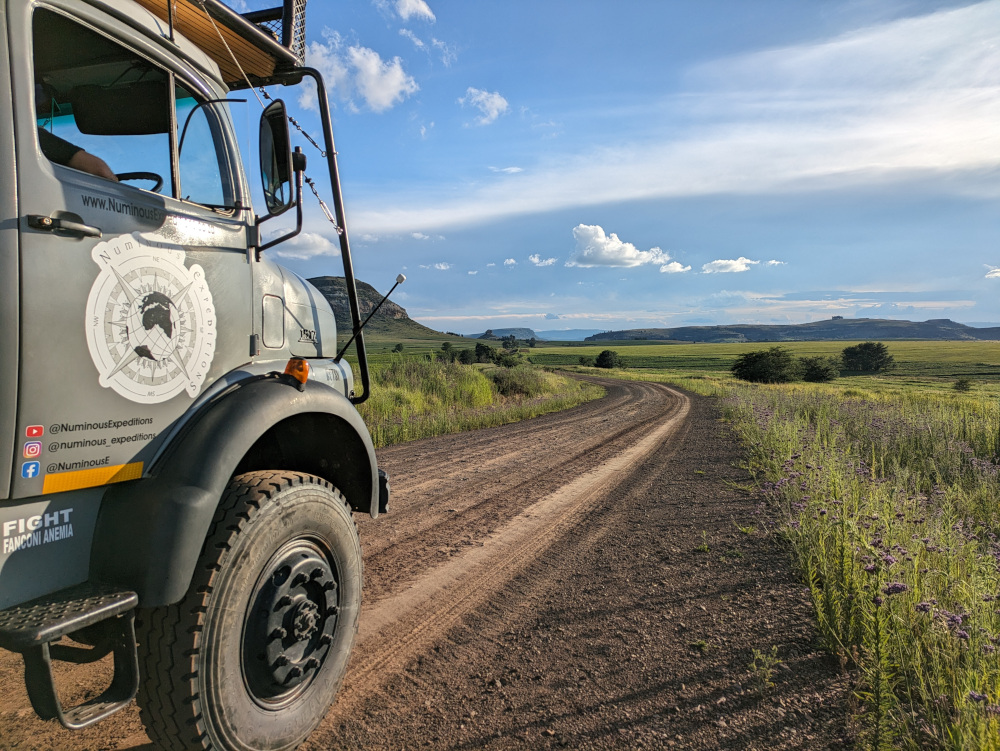
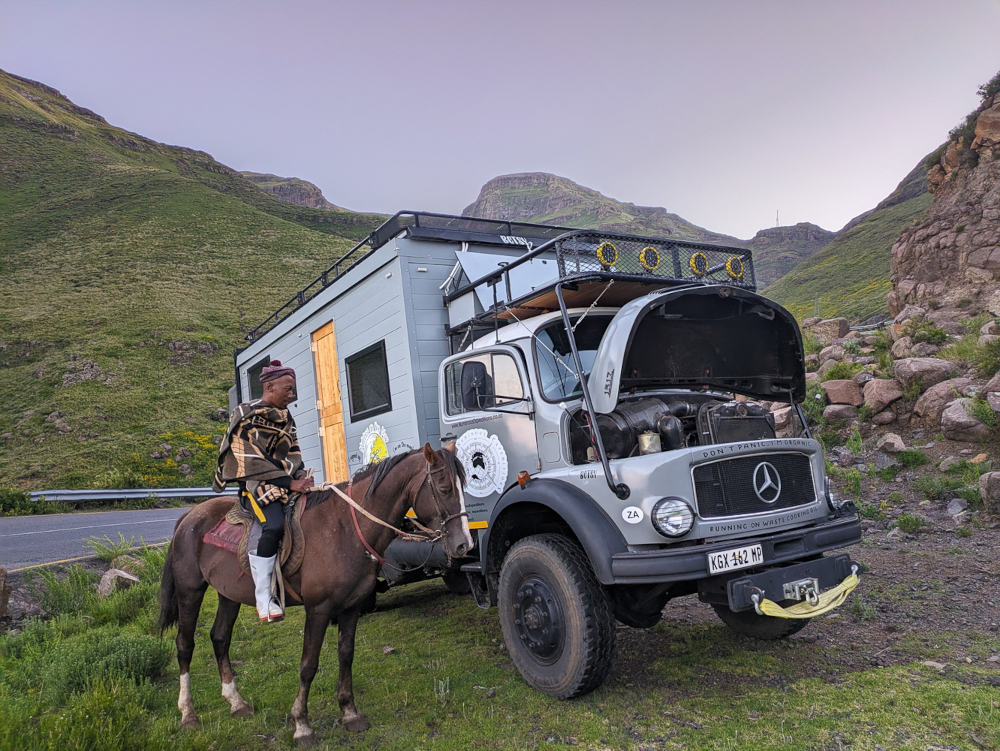
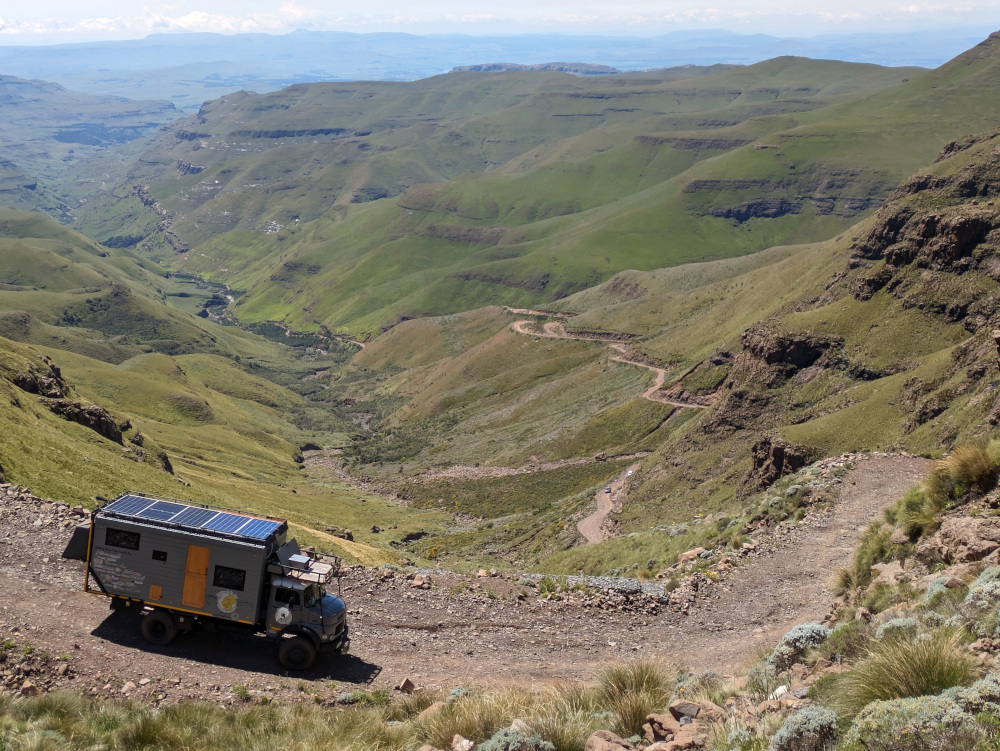
Our first stop in Lesotho was at Maliba Mountain Lodge. Afterwards, making our way up Moteng Pass, Betsy began overheating. We found a gap in the barriers and pulled over for the night. Imagine our surprise when, in this isolated area, a large group of young initiates came running past.
Driving Sani Pass was a bucket list experience for me, but more nerve-wracking for Jolandie. Other travellers couldn’t believe that we were going to attempt it. But Betsy crawled down at a steady pace and had no issues with any rocks or ruts.
What is Betsy’s story?
We spotted this 1995 Mercedes-Benz 1517 L-series 4×4 in Malmesbury. Originally, our dream was to drive up through Africa. But as the dream evolved to spending 10 years on the road, we wanted more of a home. What appealed is that Betsy’s got a 15t GVM (gross vehicle mass), which gave us plenty of room to build something on the back. Betsy is 4×4, which is a requirement for the trip. You see a lot of these trucks in countries across the continent, so that’ll help if we need parts.
Does Betsy really run on used cooking oil?
When Jolandie came across the story of a family that toured Africa in a truck on used cooking oil, we thought it a great solution. We made contact with them and Mark Sampson took us through the steps for converting a vehicle to run on used cooking oil. We now have two tanks: one for diesel, one for cooking oil. For the first 10-15 minutes, we run the truck on diesel until the water inside the engine gets hot. This is used to heat the cooking oil to the right viscosity. For probably 90% of the distance between towns we cruise on oil, then swap back to diesel 10 minutes before reaching our destination. This is so that when the truck cools down at night, the oil doesn’t get thick in the lines.
How did you turn her into the truck you have today?
We tried to do about 90% of the work on the truck ourselves, so that we can deal with setbacks on the road. We’ve probably had four or five breakdowns by now and we’ve been able to sort out all of them. Before working on Betsy, we didn’t have any mechanical experience. But we did the conversion on a farm near Nelspruit, so we could draw on the experience of the community. As soon as I ran into a hiccup, I would just ask around. Because Betsy is older, everything is straightforward and mechanical. I could figure out how something worked by taking it apart and piecing it together again. If something was more specialised, YouTube generally did the trick.
We began by cleaning her up, replacing fuel lines, removing rust and respraying the base. My brother-in-law, a professional draughtsman, designed the torsion-free subframe. I wanted to use a frame so we could hide the electrics in the wall cavity. We used light steel framing, Chromadek steel exterior cladding and a plywood interior. Insulation was important to make our home cosy in winter and easier to keep cool in summer. For this we used 50mm Isoboard, expandable polyurethane foam and green ceiling foam.
Instead of using stainless steel tanks for storing water, we opted for bladders. We have a 150-litre greywater system that catches water from the shower, bathroom basin and washing machine. We use this greywater to flush the toilet. Then we also have about 500-litres of fresh water, which hangs suspended from the box. That amount of water lasts us around two weeks.
What is the interior like?
When you come in the front door, you have the kitchen and dinette/lounge to the right. We made the countertops from saligna (blue gum) and they came out very nicely. There’s a four-plate gas burner and an electric oven that is also a microwave. We’ve got two benches either side of a little table, with storage for two AGM batteries in each bench. To the left of the front door is the bathroom: toilet and basin one side, shower the other. Although it’s typical to have these as a combined unit, we didn’t like the idea of a wet room. What if you take a shower and then later walk into the bathroom in your shoes? You’d have mud all over the place.
To get to the sleeping area, you go up some steps, inside which we keep our shoes. Our bedroom has a double bed mattress, custom-sized for our layout. Around the bed we have cubby holes for storage and cupboards for clothing. Under the bed is the ‘garage’, accessed from the outside. This is where we keep Jolandie’s sewing machines, summer/winter clothing, the stem cell kits, market equipment and camping gear.
What is the standout feature for you?
Something special is the sundowner deck over the cab. I built it from scrap steel lying around on the farm. The decking timber I got from a farmer whose jacaranda tree had been struck down by lightning. It rounds off the truck nicely, but it’s really for pleasure.

Where are you going on this trip?
About a year or two before we finished the build, I started working on the map of where we want to go. It needed to be a 10-year trip, because the doctors gave me another 10 years. We want to use that time to give our lives a bit of purpose and meaning. We plan to spend about five to six years exploring Africa. I used the Tracks4Africa maps in Base Camp to plan the route. First up the east coast to Kenya, then back down before travelling via Zambia and Angola to the west coast of Africa. We will travel through West Africa and on to Morocco, then cross over into Spain. Our route will then lead through Europe and Asia, ultimately finishing in Vietnam.
Robin and Jolandie’s tips for living on the road
- Design your layout according to your lifestyle. It’s going to make the trip so much better if you’re comfortable in your home. If you’re going to get irritated washing clothing in a bucket, best get a washing machine.
- Storage is crucial. If things start piling up on surfaces, it quickly starts feeling cramped. So keep your work areas clean and tidy things away.
- It’s really important to keep your hands on your vehicle. If we look after Betsy, she looks after us.
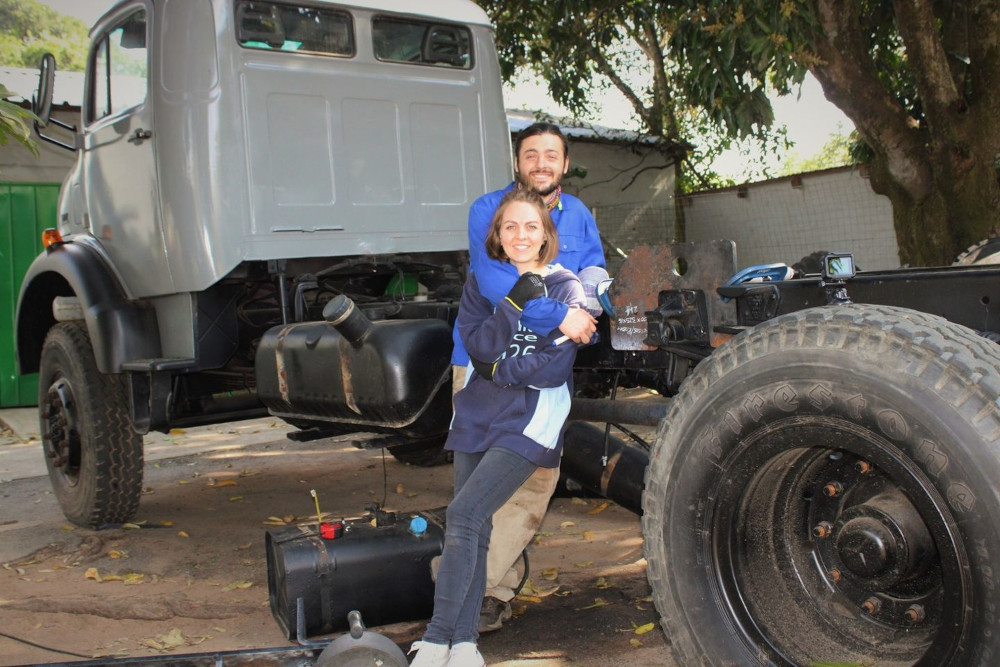
- Daily exercise is vital as driving long distances tire out the body and mind. Light stretches in the morning give you a good start to the day and prepare you for the journey.
- Don’t be scared of people, usually they are just curious. If you open up to the local community, it will make a huge difference in your experience and in theirs.
- A smile and a friendly handshake go a long way in determining the tone of your stay. Often you end up having amazing conversations with total strangers as a result.
- Making an income on the road is challenging, at times it feels impossible. Having a plan is good, not that it will always works out. In financially stressful situations on the road, I think it is important to try to allow the ‘river’ to take you and guide you. It is an adventure after all.
To learn more about Robin and Jolandie’s expedition – and Betsy the truck – visit their website, follow them on Instagram and watch their videos on YouTube.
